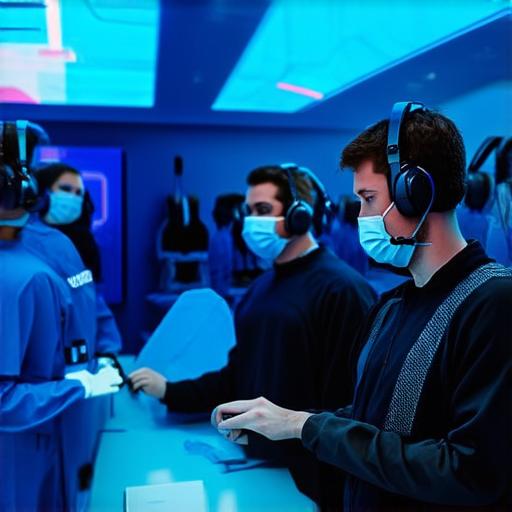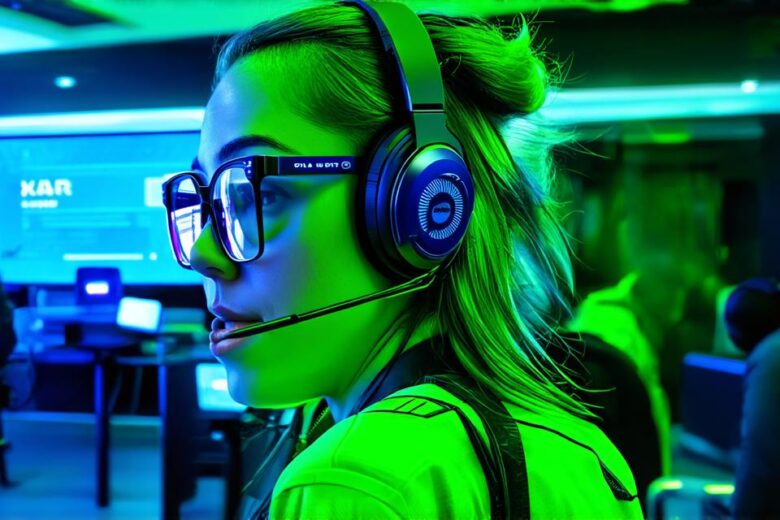In recent years, augmented reality (AR) technology has been gaining popularity in various industries due to its potential to enhance learning experiences and improve knowledge retention rates.
AR refers to a technology that overlays digital information onto the real world, providing an interactive and immersive experience for users. This technology has significant applications in training initiatives across different domains, including healthcare, aviation, manufacturing, and military.
One of the key benefits of using AR technology in training is that it allows trainees to better understand complex concepts and retain information more effectively. By overlaying digital information onto physical objects or environments, trainees can gain a deeper understanding of how things work and why certain actions need to be taken.
This technology can also help trainees visualize abstract concepts in a more tangible way, which can improve their ability to remember and apply the knowledge they have learned.
In addition to enhancing learning experiences, AR technology can also be used to simulate real-life scenarios in a virtual environment. This can provide trainees with valuable experience and prepare them for actual situations that may arise in their profession.
For example, surgeons could use AR technology to practice complex surgical procedures on a virtual patient, allowing them to gain experience without risking harm to a real patient. Similarly, pilots could use AR technology to simulate flight scenarios, which can help them improve their decision-making and reaction times during actual flights.
AR technology also provides an opportunity for more personalized learning experiences. By allowing trainees to learn at their own pace and in their preferred style, trainers can create a more engaging and effective training experience.
For example, visual learners may prefer to learn through interactive simulations or videos, while kinesthetic learners may prefer hands-on practice or role-playing exercises. By catering to these different learning styles, trainers can create a more comprehensive and effective training program.
Another advantage of AR technology is that it allows for real-time feedback and guidance. For example, during a surgical procedure, a surgeon could use AR technology to receive feedback on their technique from an expert, which can help them make adjustments in real-time and improve their performance more quickly.
This technology can also be used to provide trainees with immediate feedback on their progress, allowing them to identify areas where they need to improve and focus their learning efforts accordingly.
Furthermore, trainers must also consider the specific needs and preferences of their trainees when implementing AR technology. Some trainees may prefer a more hands-on approach to learning, while others may prefer visual aids or interactive simulations. By catering to these different learning styles and preferences, trainers can create a more effective and engaging training experience for their trainees.

There are many real-world examples of how AR technology has been used in training initiatives. General Electric, for example, uses AR technology to train its technicians on complex machinery repairs. By overlaying detailed instructions and diagrams onto the physical machine as they work on it, technicians can improve their efficiency and accuracy during the repair process.
The US military also uses AR technology to simulate combat scenarios, providing soldiers with valuable experience and preparation for actual battlefield situations. Similarly, BMW uses AR technology to train its technicians on complex car repairs, allowing them to visualize the internal workings of the car and make more precise repairs.
Overall, AR technology offers a promising opportunity to enhance learning experiences and improve knowledge retention rates in training initiatives across different industries. By providing an interactive and immersive experience for trainees, this technology can help trainees better understand complex concepts and retain information more effectively. It also allows for more personalized learning experiences and can create more realistic and immersive training experiences. While careful consideration of specific learning objectives and goals and the needs and preferences of trainees is necessary for effective implementation, AR technology holds significant potential to revolutionize many industries and improve training outcomes.
